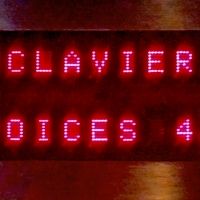A word about polyphony
For Drambo beginners and casual users, polyphony isn't usually something to worry about. In most cases it "just works".
For a start, wherever you want a different polyphony, just use a MIDI2CV module with the polyphony you need and make sure you also use the gate signal from it if different voices have to trigger events separately like in envelope generators.
Sometimes we want to go further though and start messing with polyphony and polyphonic signals - then it might not be easy to understand because a lot of it happens "backstage".
Polyphony means that one signal connection (like Gate, Pitch, Velocity in MIDI2CV but also common signal lines) can contain multiple voices and Drambo modules know how to handle this automatically.
You can access and process individual voices of a polyphonic signal with modules like Mono2Poly, Poly2Mono, Many2Poly, Voice number, Voice selector.
Be aware that some modules and racks will "downmix" polyphony so the (audio) signal won't carry multiple voices anymore.
Also be aware that playing polyphonic voices will, like in common polyphonic synthesizers, be rotated (incoming notes that exceed the adjusted polyphony will kill the oldest played notes) and while you have access to the individual voices, there is no built-in "sorting mechanism" that would let you sort chord notes by their pitches and their playing status for example.
Questions? Ideas? All welcome here :)


Comments
Great post and very timely for me as I am studying this topic.
You already explained, but I’m afraid I still don’t grasp it. In this following very simple scenario why doesn’t a second gate mute previously sounding ones? If I play rapid gates in succession it seems the notes overlap (the scope shows higher amplitude, although I can’t hear it):
are you sure you are not tricking yourself with a "to long envelope "?
It works here. After increasing MIDI2CV Voices to 2, notes overlap. When set to 1, the new note cuts the old one.
Maybe it’s working as I expected and I’m just being dumb. Or I just needed confirmation as I couldn’t be certain myself. At least I think I figured how it works now. Thanks guys, and @rs2000 whenever you feel like doing these kind of posts, please do! I’m sure many here benefit from these little eye openers
it does as you would expect, 1 voice is mono , additional voices generate polyphony without further ado. easy as pie.
it starts getting tricky if you want to do stuff to some voices of the polyphonic thing ...
I’m not at that level yet 😅
So far I’m ok with monophonic, and only using polyphony for choke groups
Polyphony is a complex thing in polyphonic synths. Its not only dubbling up voices ... its also about the basic interaction of
notes available and played at a time vs envelope length and notes rotating over available outputs (known as voice stealing) ...
Drambo does all the complicated stuff in the background for you. no need to mess with it. just turn up number of voices. it will behave as expected. 😀
I’m familiar with all those concepts, just haven’t much used in practical projects cause there’s so much to explore. I appreciate the guidance 🙏
I want to recommend here that anyone wanting to understand or debug their polyphonic patches should use the newer scope (long tap on an audio output) instead of the old oscilloscope module. The new one has pretty convenient display options for multiple voices and also has a spectrum analyzer.
i tipped my toes a little in it, but didnt come up with much useful things, except panning the voices differently ...
what I tried to do was polyphonic stuff with phasers and key follow, at some point things got very involved, I gave up. 😂
convenient display options for multiple voices
say what now? I had no idea
I'm referring to this, you can see that the MIDI to CV module has 6 voices, and the scope allows one to select any voice for display, or the sum (Σ) of all voices, while also showing which voices are active (in this case, three, they actually illuminate following the signal so it's pretty convenient for modulation signals as well). Just just hold any signal input and it shows up, it even works for MIDI ports. If you want to change what you're monitoring you can just tap "Output" and select another port.
@NoiseFloored that is very cool, I didn’t know that. Thanks a lot for the explanation
I agree with @pedro, @rs2000, please do more of these type of posts whenever you can. Thank you!
On the topic of polyphony, Drambo has a very good example in the main menu, under “tutorials”, the very first one entitled “Many to Poly Module”. REAL interesting being able to separate a handful of voices and do different things with each.
I had Drambo over a year before I ever realized these tutorial projects existed in the main menu lol. There’s a lot of eye openers in there!
The voice monitoring in the floating scope that @NoiseFloored mentioned is very cool. You get an animation of voice allocation and can monitor each individual one. Can’t believe I missed it for so long, but I only recently started playing with polyphony